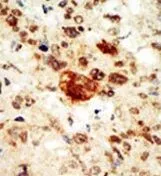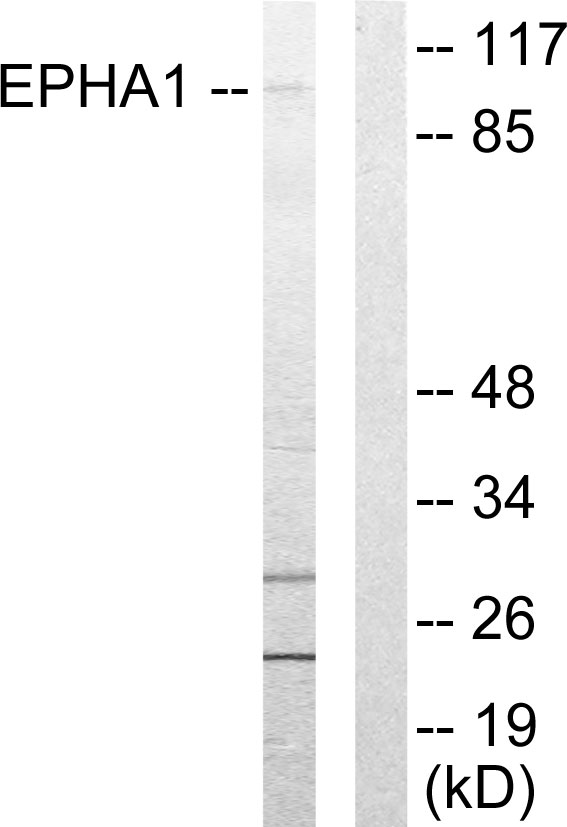
WB analysis of HeLa cell lysate using GTX25385 EphA1 antibody.
EphA1 antibody
GTX25385
ApplicationsWestern Blot, ImmunoHistoChemistry, ImmunoHistoChemistry Paraffin
Product group Antibodies
TargetEPHA1
Overview
- SupplierGeneTex
- Product NameEphA1 antibody
- Delivery Days Customer9
- Application Supplier NoteWB: 1:1000. IHC-P: 1:50-1:100. *Optimal dilutions/concentrations should be determined by the researcher.Not tested in other applications.
- ApplicationsWestern Blot, ImmunoHistoChemistry, ImmunoHistoChemistry Paraffin
- CertificationResearch Use Only
- ClonalityPolyclonal
- ConjugateUnconjugated
- Gene ID2041
- Target nameEPHA1
- Target descriptionEPH receptor A1
- Target synonymsEPH, EPHT, EPHT1, ephrin type-A receptor 1, eph tyrosine kinase 1, erythropoietin-producing hepatoma amplified sequence, erythropoietin-producing hepatoma receptor, hEpha1, oncogene EPH, tyrosine-protein kinase receptor EPH
- HostRabbit
- IsotypeIgG
- Protein IDP21709
- Protein NameEphrin type-A receptor 1
- Scientific DescriptionThis gene belongs to the ephrin receptor subfamily of the protein-tyrosine kinase family. EPH and EPH-related receptors have been implicated in mediating developmental events, particularly in the nervous system. Receptors in the EPH subfamily typically have a single kinase domain and an extracellular region containing a Cys-rich domain and 2 fibronectin type III repeats. The ephrin receptors are divided into 2 groups based on the similarity of their extracellular domain sequences and their affinities for binding ephrin-A and ephrin-B ligands. This gene is expressed in some human cancer cell lines and has been implicated in carcinogenesis. [provided by RefSeq, Jul 2008]
- Storage Instruction-20°C or -80°C,2°C to 8°C
- UNSPSC12352203




![IHC-P analysis of human ovary carcinoma (left) and breast carcinoma (right) using GTX83346 EphA1 antibody [5D2].](https://www.genetex.com/upload/website/prouct_img/normal/GTX83346/GTX83346_20170912_IHC-P_w_23061322_532.webp)

